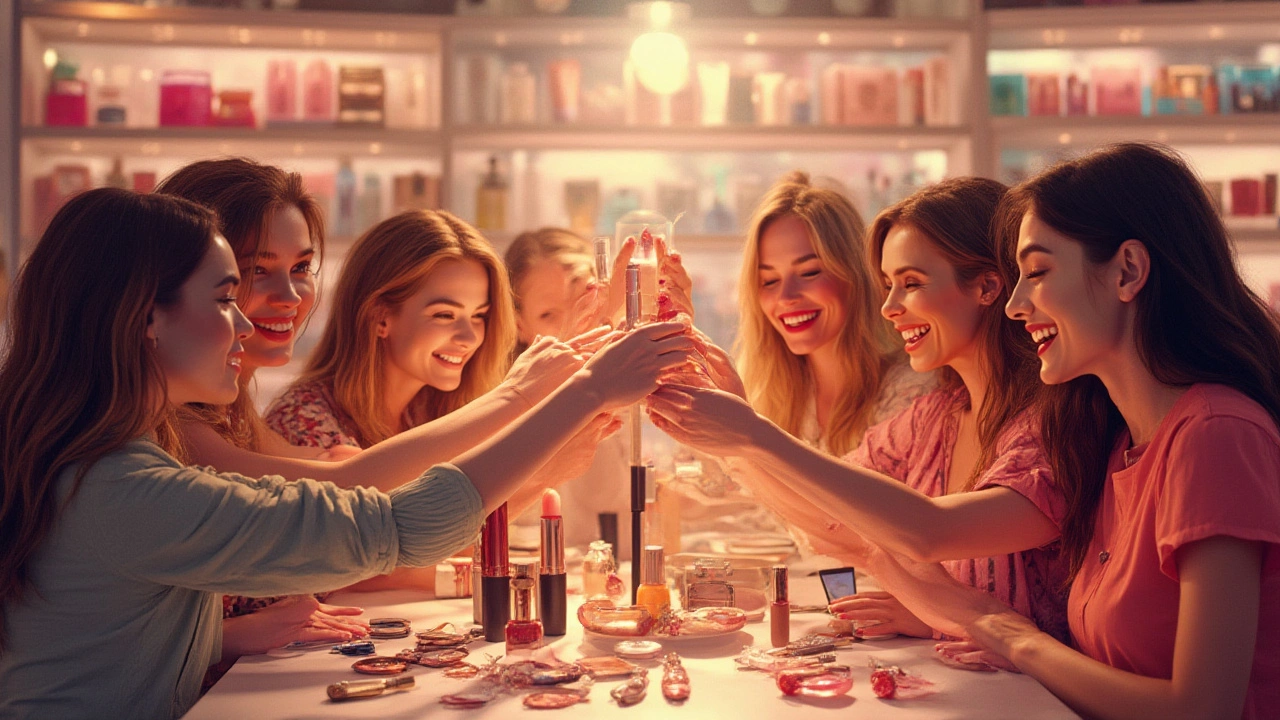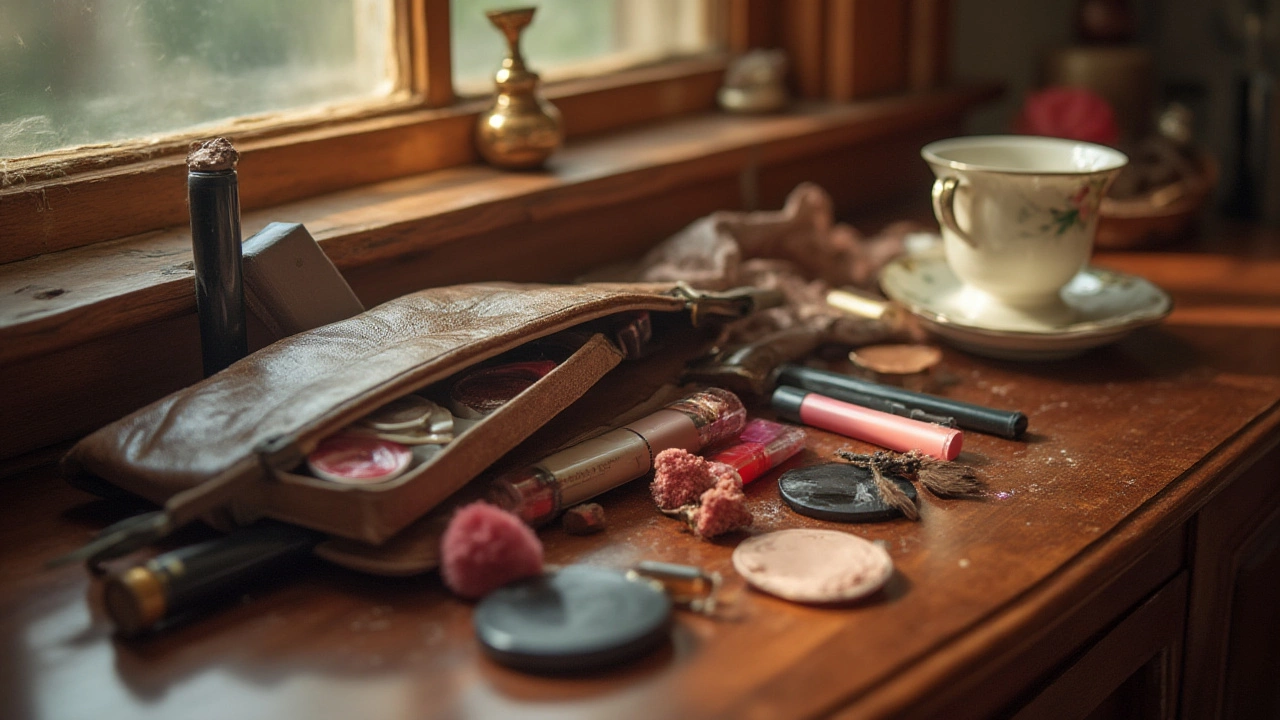
If you had to guess the world’s best-selling makeup item, what would you say? Mascara? Lipstick? Maybe foundation? It’s kind of wild how the answer shapes how billions of people express themselves daily. Every makeup bag, bathroom drawer, and purse probably has this all-star product. And spoiler alert: it’s not always what you’d expect, especially with beauty trends swinging like a pendulum over the last decade. There’s a juicy backstory behind every sold makeup product, and trust me—it's not just about colors and packaging. The real champion has conquered markets from Paris to Tokyo, survived economic downturns, and even adapted to TikTok crazes. Some might say there’s a romance to the ritual of applying it; others, it’s a lifeline for confidence boosts or a dash-out-the-door fix. But numbers don’t lie. The most sold makeup item grabs the spotlight in every season, regardless of what’s trending on Instagram. Let’s break down what’s topping global charts, why shoppers can’t get enough, and what makes this classic product absolutely timeless.
The Reigning Champion: Lipstick or Mascara? The Data Says...
If you look at makeup counters and online stats, lipstick is hands-down the most iconic—and the most sold—makeup item of all time. Sounds almost too simple. But the numbers are too big to ignore. According to NPD Group’s 2024 global beauty report, lipstick sales accounted for over $17 billion in revenue worldwide. That figure outstrips mascara, foundation, and brow pencils. Go back even to the crazy days of 2020, when mask mandates had us hiding our lips, lipstick still didn’t fade away. Sales slipped a bit, but as soon as restrictions eased, lipstick made a massive comeback—like it had been storing up all that energy for one fabulous relaunch. By 2023, global searches for "best lipstick" nearly doubled compared to their pre-pandemic years. No other beauty product had that kind of bounce back.
Part of the lipstick power lies in its history. Cleopatra purportedly used crushed beetles for her crimson pout. In the 1920s, American women marched to the polls with bright lips as a symbol of empowerment. There’s something universal about lipstick—it’s the optical shortcut to "put-together." It travels with you: no bathroom mirror needed, no fuss with brushes or elaborate techniques. Almost anyone, from teens experimenting for the first time to stylish 90-year-olds, has at least one go-to shade. And get this—a study by Mintel found that nearly 85% of women in the UK owned at least one lipstick in 2024. That’s a wow-factor stat that even foundation or mascara can’t match globally.
Don’t get me wrong; mascara is a close runner-up. Lash-lengthening technology sells fast, and brands like Maybelline Great Lash and L’Oreal Voluminous—together—move millions of tubes every year. In the US alone, mascara topped beauty bestsellers in several major chains like Ulta and Target during Q1 of 2025. But lipstick takes the trophy for worldwide, all-time sales. The emotional connection with lipstick is just different. You can see its color from across a room. It marks occasions—weddings, job interviews, first dates, those "I need a confidence boost" mornings. If someone says "makeup essential," you probably picture a lipstick bullet before anything else. No special skills, just swipe and go.
So what’s behind this endless wave of lipstick purchases? Shades and finishes morph constantly—matte, gloss, satin, liquid. There’s a rainbow of choices. Limited editions, collabs with celebrities, and viral social media trends drive new fans to shelves and sites nonstop. Plus, lipstick is one of the most affordable indulgences. Even luxe brands keep a bullet in reach for less than a fancy dinner. During economic recessions, experts talk about the "lipstick effect"—data shows shoppers may ditch bigger splurges, but a new lipstick feels luxurious without breaking the bank. This tiny tube packs a big psychological punch.

What Makes Lipstick the Top Seller?
What gives lipstick this never-ending appeal? Basically, it’s a combination of accessibility, instant transformation, and a big dash of psychology. First up—almost anyone can wear lipstick. There’s no learning curve. No need for perfect skin, steady hands, or thirty blending brushes. You can pop open a tube in the back of a taxi or under harsh fluorescent lights, and in ten seconds, you look more awake, alive, and put together. A single swipe draws attention to your face and broadcasts confidence. Sometimes, when everything else feels rushed, a coat of a favorite lipstick can make you feel like a superhero ready to take on the world. Even makeup minimalists keep a tube just for a pop of color in a pinch.
There’s this almost magical versatility to lipstick, too. Do you want to look polished for a meeting? Classic red. Need to soften your face for brunch? Try a peachy nude. Trying experimental looks without judgment? Bold blue or neon pink—whatever matches your mood. That simple tube offers more variety per pound than a box stuffed with eyeshadows. A few swipes of lipstick have even been the difference between looking exhausted and looking energized before walking into a big event. The right shade can light up your whole look, even on jeans-and-t-shirt days.
Then there’s packaging. Lipstick tubes get the most creative makeover every year. You’ll find these adorable, Instagram-worthy cases in every shape, size, and finish. Some fans buy new shades just for the limited-edition packaging—especially collabs with designers or pop culture icons. And if you love a little nostalgia, vintage lipsticks with gold detailing or retro fonts are everywhere. Makeup collectors are known to display their prettiest lipstick tubes on vanity tables or even save empties as keepsakes. Try that with an eyeshadow pan or mascara wand—it just doesn’t feel the same.
The science supports lipstick’s staying power, too. Several studies have found that wearing lipstick can genuinely affect mood. Psychologists call it “enclothed cognition”—basically, what you put on changes how you think and act. Swiping on lipstick actually boosted confidence for most participants. In one quirky bit of research, volunteers who wore their favorite lipstick to stressful events reported lower anxiety levels and more positive moods compared to those who didn’t. That’s rare for beauty products. We’re not just talking about looking better—sometimes, a bold color helps you feel braver, too.
If you want a tip on buying lipstick: shade matters, but formula is everything. Comfort is key, especially for all-day wear. Go for satin or creamy matte if you hate sticky or drying formulas. And if you want it to last beyond your first coffee, blot after your first swipe and add a bit of translucent powder. It’s an old makeup artist trick that doubles the wear time. Another tip—if you’re new to bright shades, blot your lipstick with a tissue, then dab a light layer of balm on top for a more natural, just-bitten look. It eases you into bold color without full commitment.
Lipstick Icons, Cult Favorites, and Shopping Tips
The story of lipstick wouldn’t be complete without mentioning some of the products that have become legends. MAC’s Ruby Woo is one of those reds that nearly every makeup artist, editor, and regular lipstick fan swears by. Launched in the 90s, it’s become so famous that a tube sells somewhere in the world every minute. Revlon’s Super Lustrous line dates all the way back to the 1950s and still wins awards for best drugstore lipstick—even after 75 years of trend swings. For beauty insiders, Charlotte Tilbury’s Pillow Talk is the gold standard for subtle, rosy nudes, with Sephora reporting it as their #1 selling single shade in multiple countries through 2024.
Drugstore brands dominate, too. Maybelline’s Color Sensational and L’Oreal Paris Colour Riche regularly top Amazon’s bestseller lists. Most tubes come in under £10, and the quality keeps improving. Indie brands like Fenty Beauty turned the industry on its head in 2017 by offering 40+ shades at launch—finally giving everyone an option that actually matched. Social media, especially TikTok and Instagram Reels, made viral shades shoot to bestseller status overnight; just look at the 2023 boom for Clinique’s Black Honey, a color first launched in the 70s but suddenly snapped up by millions of Gen Z shoppers in 2024 after going viral for "magically" flattering almost anyone’s lips.
If you’re browsing for your own perfect tube, here’s a smart checklist:
- Think about your comfort with boldness. Sheer shades are easiest for beginners, while highly pigmented mattes give an editorial punch.
- Swatch before you buy. Natural light tells the truth about undertones. If you can’t test in-store, Google image search the shade on plenty of different skin tones.
- Check for hydration. If your lips dry out easily, avoid super-matte or liquid formulas unless you pair with a hydrating balm.
- Look for lasting power. If you hate touch-ups, longwear formulas or "liquid to matte" options survive drinks, snacks, and chatter.
- Watch out for fragrance. Some luxury brands add floral or candy scents; if you’re sensitive, always check the ingredient list.
A quick hack? If your lipstick starts feeling a little stiff, roll the bullet lightly on the back of your hand to warm it up. For a precise edge, use a lip liner around the border first—that keeps things tidy and makes color last longer.
The most sold makeup item isn’t just a trend-of-the-moment winner—it’s the unsung hero of makeup history. Lipstick is simple in concept, but endlessly collectible and completely transformative in practice. Whether you’re a cherry-red devotee or you hoard nudes, that little tube of color is the world champ for a reason. Chances are, you’ll never really stop buying it. And honestly, isn’t there something wonderful about knowing you can always swipe on a fresh start, one shade at a time? If you reach for a lipstick more than anything else in your collection, you’re not alone—and you’re right in step with millions of makeup lovers, past and present.